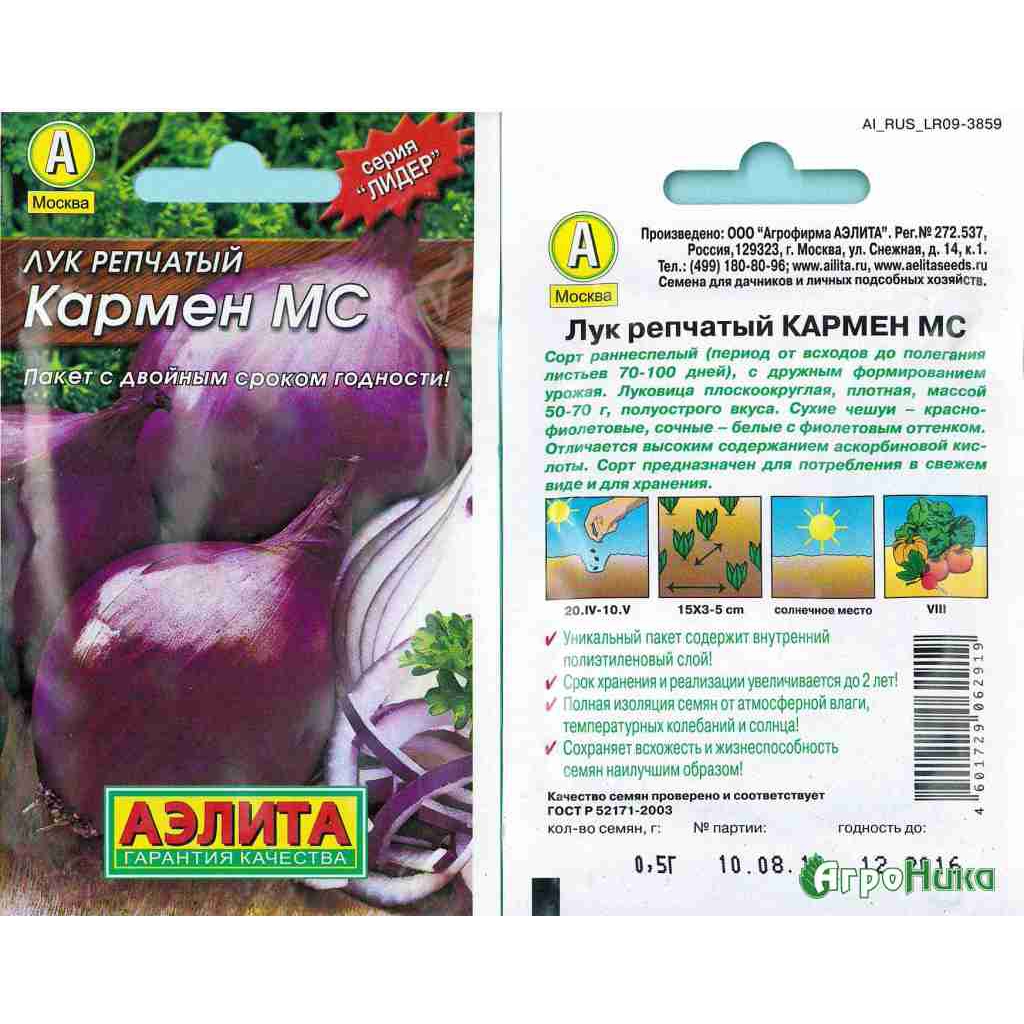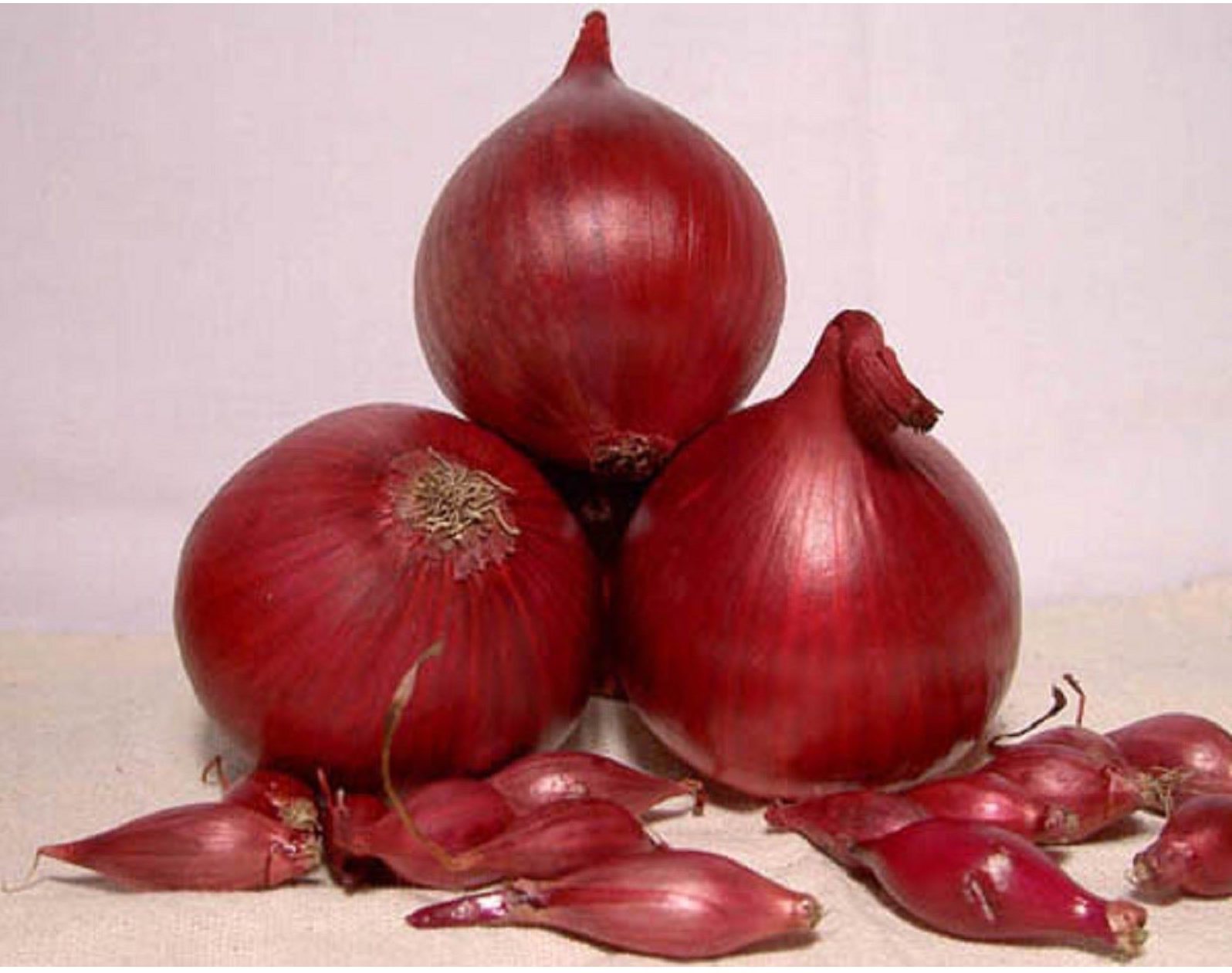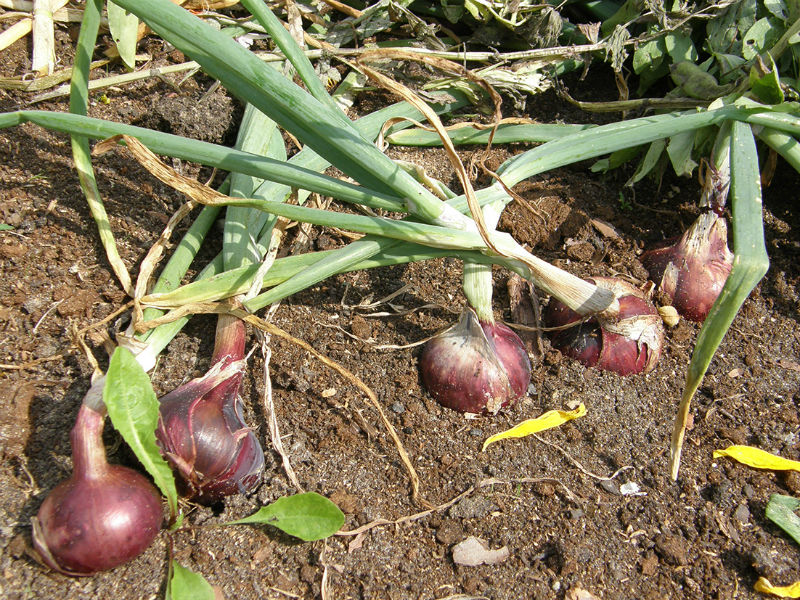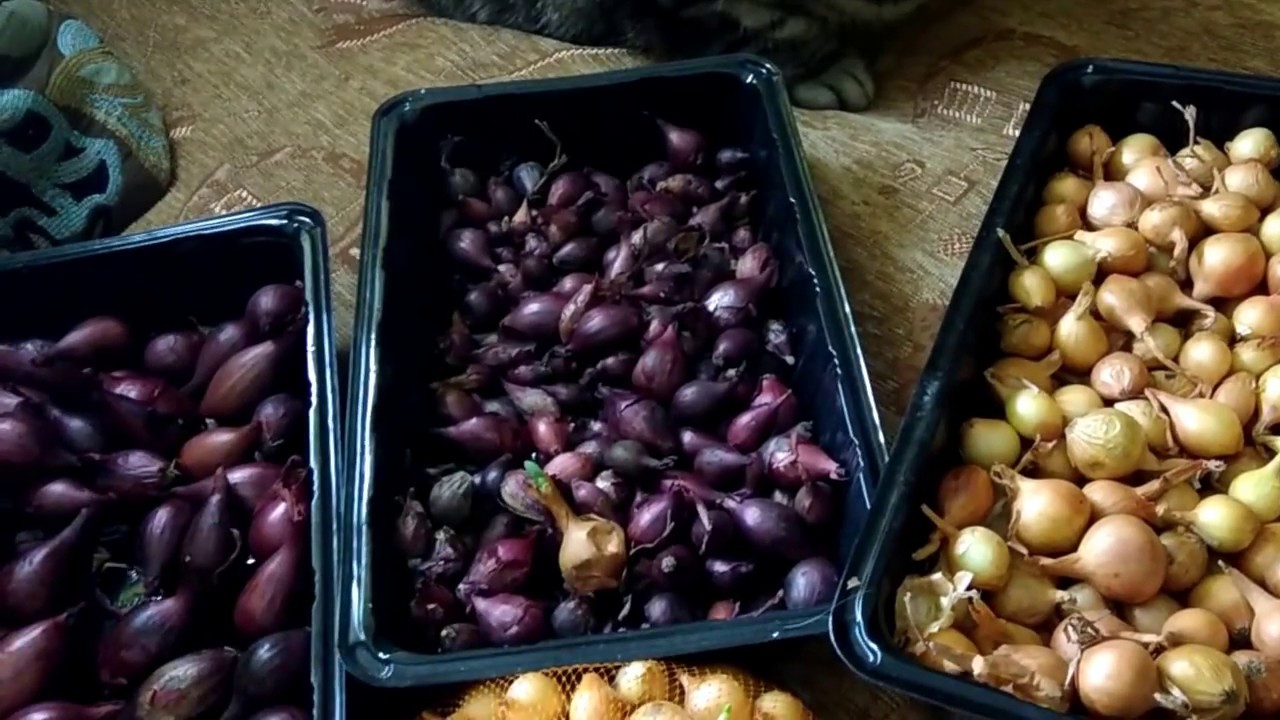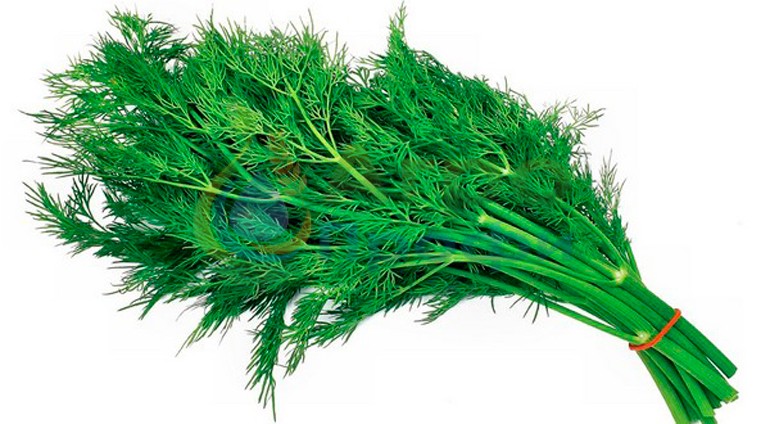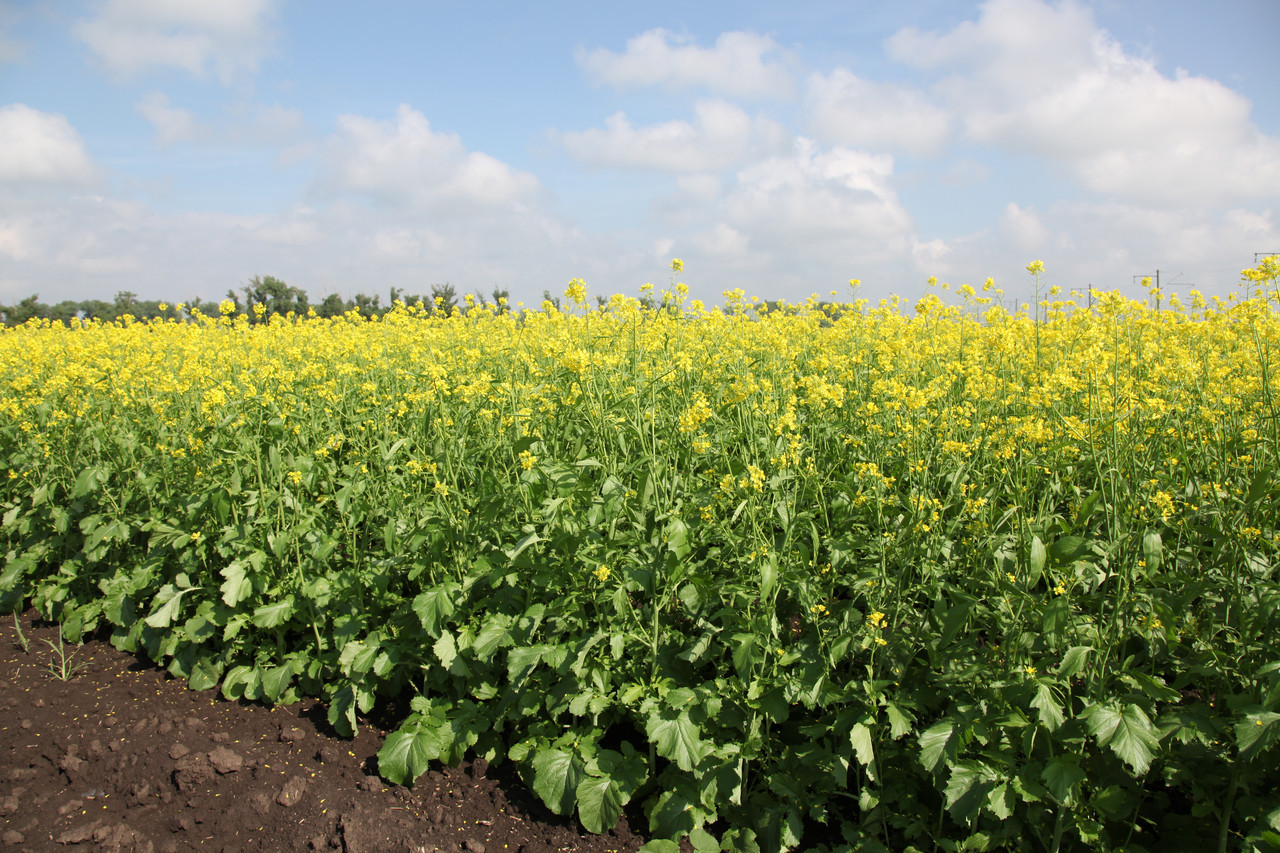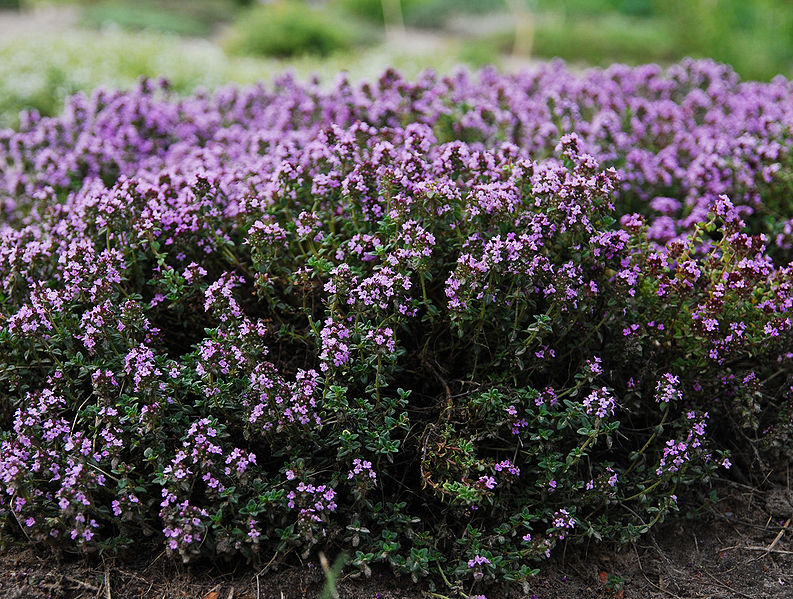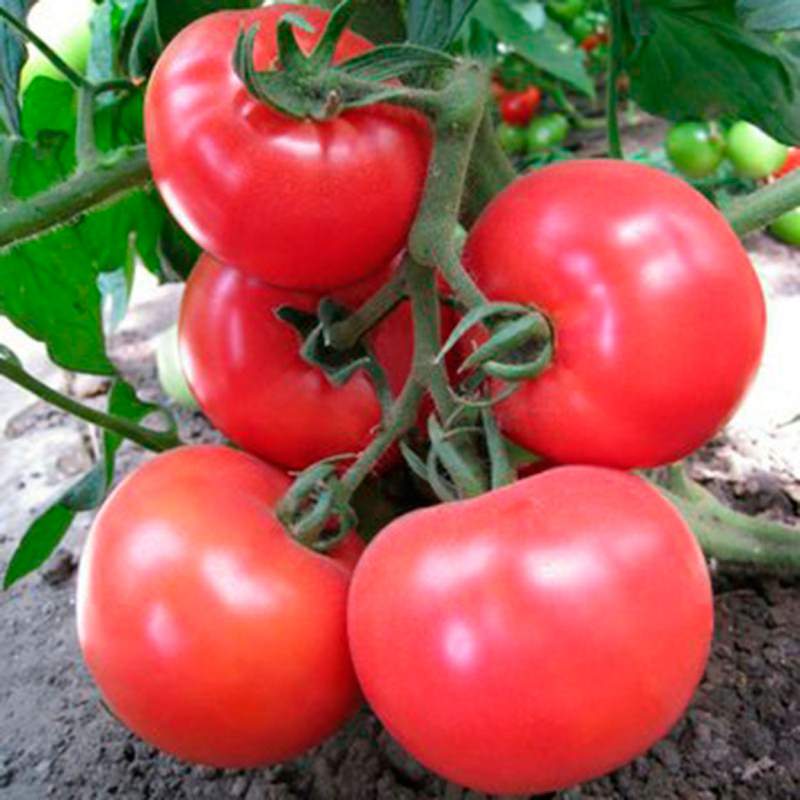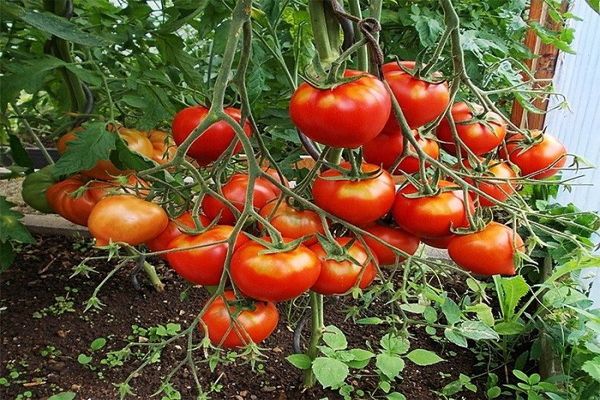Content:
Carmen red onion is a Dutch variety that can be distinguished by good keeping quality and early ripening, therefore it is available almost all year round. The red onion variety is chosen for its soft, juicy taste. Purple-tinged rings will brighten any dish. In addition, onion-carman contains a large amount of nutrients, which is suitable for the manufacture of various vitamin salads. Suitable for planting in regions with different climates, including the northern ones.
Description of the variety
Characteristics of the Carmen onion variety:
- Appearance: flat-round bulb, medium density, medium weight - 50-70 g. It can reach a maximum weight of 120 g. The color of the top dry scales is violet-red, juicy - white with a shade of violet;
- Nesting - small-nesting, forms one, rarely two bulbs from one nest;
- Feather height - 30 cm;
- Productivity - up to 1.6 kg / m²;
- The taste is semi-sharp. This is the average between savory and sweet varieties;
- Appointment - salad. Suitable for fresh consumption, heat treatment is less preferable;
- Ripening period - early ripening, vegetation period - 65-95 days. Harvest month - August;
- Culture - one-year and two-year cultivation is supposed.
Agricultural technology of cultivation
Planting Red Carmen onions is possible by seeds, through seedlings in one season, or by sevkom - ready-made annual onions. Planting material should be purchased from trusted suppliers. The sevok should be clean, even, dense. If you buy seedlings of poor quality, the bulbs may be dried out, sprouted or diseased, such planting material will not give a good harvest.
Growing seedlings from seeds
To grow onion seedlings from seeds, they take a tall container or make so-called twisted snails, for this they use a porous material, which is taken for substrates for laminate flooring, it is convenient to cut and twist it. Cut off a strip of material, 15 cm wide, unwind a strip of toilet paper on it and moisten it with a spray. Dark seeds are better visible on white paper and are easy to place. Along the upper edge of the materials laid out on top of each other, each seed is placed separately at a short distance from each other. Then the earth is poured, about half a centimeter in height, gently pressed. The material is twisted with a shell-roll, fixed with tape. The seed-side snails are placed up in trays on the window. Before the first sprouts-loops appear, a plastic bag is put on the snail. In no case should it be poured over the seedlings, so that diseases do not appear, careful watering is carried out as needed.
Seedlings for planting in open ground are prepared in mid-May. The transplant is carried out in parts: the snail is unrolled, part of the seedlings is taken, and it is placed in a small container with water. With this action, the earth is eroded, and onion sprouts are freely separated from each other. The bottom of the root is trimmed a little, and the top is cut off by 10 cm, measuring from the rudiment.
Seeding preparation for planting
- The most favorable temperature for storing planting material is + 18 ° C, in stores this rule may not be observed, storage takes place at a lower temperature so that the seedlings do not germinate.Therefore, it is better to buy it in advance and keep it at room temperature for at least 2 weeks. In this way, you can avoid a quick exit at the bow of the flower arrows;
- Carmen onion sets are sorted by size: very small or sprouted specimens can be planted in a thickened way on greens;
- The day before planting, warm the seedlings in an even higher temperature, about 40 ° C, for example, on a battery, for about 8-10 hours;
- Sevok was stored for a long time and it needs to be saturated with moisture, for this, it is put in water for a while. So the onion will sprout faster;
- For good germination, the seedlings can be soaked in a universal growth stimulator;
- Further, in order to disinfect the planting material, it is immersed in a solution of saturated cherry-colored potassium permanganate for 15-20 minutes. Then rinse with water. The material is ready for planting.
Landing in open ground
Onions require loose soil with neutral acidity. He does not like clay and acidic soils. Mixed sand and peat are added to clay soil, lime is added to acidic soil.
A bright, open place with good ventilation is suitable. Cannot be planted after garlic and again after onions.
The soil is loosened properly, all weeds are removed, if necessary, mineral fertilizers are applied: nitroammofosk and ash or vermicompost.
Sevok of red onion Carmen and seedlings are planted in May, in warm, but not dry soil, with sufficient moisture in it from spring. The successful rooting and development of the bulb depends on the correctly chosen state of the earth.
In the prepared soil, grooves or holes are made. Pits are spilled with water from a spout. The sevok is buried by 4 cm, up to the shoulders, planted tightly, without the formation of air gaps. Cover with earth 2-3 cm. After planting, the top layer of the earth is carefully harrowed with a rake.
The plantings are planted without deepening the growth point, the root is pressed against the moist soil, sprinkled with earth, the onion sprout is slightly pressed into the ground and finally fixed with earth.
The seating scheme is 10 * 15, or for convenience, the width between the rows is made for the size of the crop care equipment: a flat cutter or a hoe, but not less than the length of the palm. The distance between the bulbs is approximately the width of the palm.
There is no need to water for the first few days after planting. In the future, the onions are watered with warm water, focusing on the weather conditions. Overfilling, as well as underfilling, is equally wrong. Drying tips of onion feathers indicate a lack of moisture, and with excessive watering, the leaves will differ in a pale green color. From the end of June, for normal ripening of the bulbs, watering is stopped. At this time, if the rains have passed, the bow can go to a new growth, in order to return it to a dormant state, the feathers are slightly pressed to the ground.
Care also consists in the obligatory loosening and removal of weeds once a week or as needed.
If the onion is doing well and is developing normally, there is no need to feed it. But in the case of a poor set of green mass, liquid fertilizers are applied under the onion: urea and mullein. At the time the bulbs are formed, they are spilled with an infusion of deciduous tree ash. One of the best fertilizers for onions will be herbal infusion; dissolved chicken droppings are also used.
Carmen onions ripen in August. It is possible to determine its maturity by the fact when new feathers are no longer formed, but which have died, the neck has dried. The onion should be removed from the ground carefully, digging in with a pitchfork, and not swinging and pulling out. It is important to monitor the weather and not allow the onions to be in the garden in the rain when they are ready to harvest. For harvesting, choose sunny, dry weather, even if a little earlier than the expected date, because onions harvested at such a time will be better stored.The earth from the bow does not need to be scraped off, but it is better to wait until it dries up, otherwise the scales can be damaged. In good weather, the green part may not be cut off at first. When cleaning for long-term storage, it is cut to a size of 3 cm.
Advantages and disadvantages of the variety
In the description of the Carmen onion variety, its planting and care is not very difficult, the culture is unpretentious and has the following advantages and differences of the variety:
- maturity - 100%;
- good keeping quality;
- sweet, fragrant bulbous taste;
- high content of nutrients;
- suitable for all regions, including the northern ones.
Carmen red onion - one of the early ripe
varieties, so it is convenient to collect and dry, having time to catch the sunny summer season. Only the small size of the bulbs can be considered a controversial drawback.
